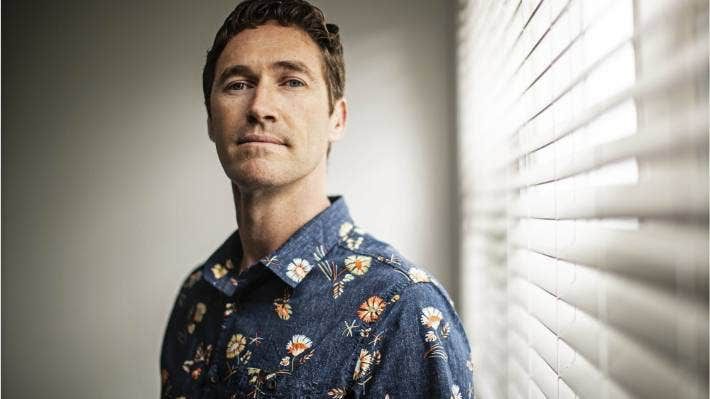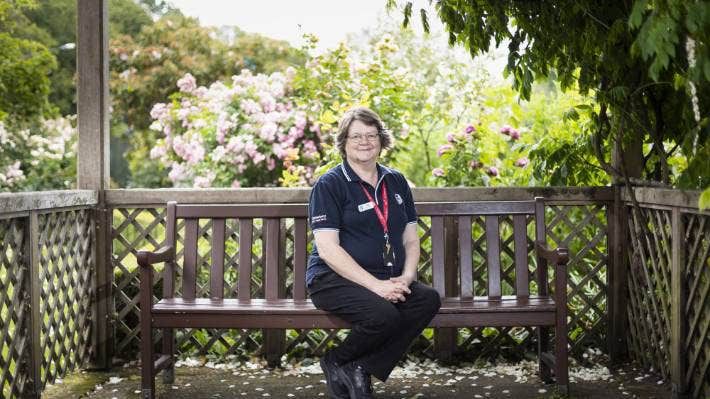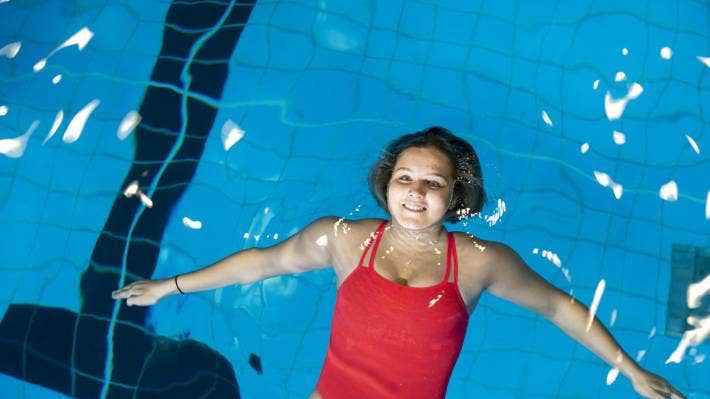How modern life can ruin your breathing
- 8 January 2021
Back in March when it seemed like Covid-19 was gunning for New Zealand like it had the rest of the world, an Auckland medical professional started having breathing issues.
The woman, who did not want to be identified for how it could reflect on her professionally, was constantly unwell with chest and back pain, dizziness, feeling out of breath and muscle tension in her head and neck. Co-workers commented on her constant sighing.
“Probably the pressure of keeping others well and safe was there,” said the 28-year-old, who helped coordinate a local hospital’s Covid-19 response. “I wasn’t necessarily concerned about getting Covid, but more just keeping family and friends safe.”

Scott Pierce is a physiotherapist who specialises in treating people with breathing pattern disorders. He also runs online classes to teach other physiotherapist around the world about the condition.
An ear, nose and throat specialist suspected she had a breathing pattern disorder, which can include bad habits such as using the chest rather than the diaphragm to suck in oxygen or unknowingly holding breaths for short periods, causing constant sighing and yawning.
The medical professional was referred to Scott Pierce, an Auckland-based physiotherapist who is internationally renowned for treating breathing pattern disorders.
“My running joke is that I can’t even do the fundamentals of life properly, even breathing,” said the medical professional, who retrained her breathing over three sessions with Pierce.
Breathing pattern disorders are a little known but increasingly common phenomena of modern life. It can affect between 6 and 12 per cent of people, according to one estimate, and the stress surrounding Covid-19 has increased its prevalence, numerous experts told Stuff.
Disorders can be rooted in the physical like the disproportionate amount of asthma sufferers who lean on bad breathing habits, or sportspeople who hone in only on fitness and ignore breathing techniques. Like the Auckland medical professional, disorders can also stem from the psychological and be triggered by constant stress or a single traumatic event like the 2011 Christchurch earthquake.
“People can get away with not breathing properly until there is an issue and that could mean sickness or exertion or anxiety,” said Trish Goulter, a senior respiratory physiotherapist at Christchurch Hospital.
Although chest breathing can be entirely normal during exercise, those who chest breath in their resting state – a classic sign of a breathing pattern disorder – have nowhere else to go when they do exercise or are under stress, Goulter said. This can lead to issues such as hyperventilation, a severe breathing batten disorder.

CDHB senior physiotherapist Trish Goulter.
Before the 2011 Christchurch earthquake, about three new breathing pattern disorder patients a week walked into Goulter’s clinic. Now, that same amount comes in daily.
“There has been stress in dealing with [earthquake] insurance claims… then we’ve also had the mosque attack,” said Goulter, adding that Covid-19 has caused another surge.
Kristine, 60 and one of Goulter’s patients, lost her home in the 2011 earthquake. She also has asthma, something that developed three decades ago after the birth of her first child.
It wasn’t until three years ago following an aftershock that Kristine realised hyperventilating was a problem for her. A doctor sent her to see Goulter, who in one session taught her to breathe with her diaphragm.
An ear, nose and throat specialist suspected she had a breathing pattern disorder, which can include bad habits such as using the chest rather than the diaphragm to suck in oxygen or unknowingly holding breaths for short periods, causing constant sighing and yawning.
The medical professional was referred to Scott Pierce, an Auckland-based physiotherapist who is internationally renowned for treating breathing pattern disorders.
“My running joke is that I can’t even do the fundamentals of life properly, even breathing,” said the medical professional, who retrained her breathing over three sessions with Pierce.
Breathing pattern disorders are a little known but increasingly common phenomena of modern life. It can affect between 6 and 12 per cent of people, according to one estimate, and the stress surrounding Covid-19 has increased its prevalence, numerous experts told Stuff.
Disorders can be rooted in the physical like the disproportionate amount of asthma sufferers who lean on bad breathing habits, or sportspeople who hone in only on fitness and ignore breathing techniques. Like the Auckland medical professional, disorders can also stem from the psychological and be triggered by constant stress or a single traumatic event like the 2011 Christchurch earthquake.
“People can get away with not breathing properly until there is an issue and that could mean sickness or exertion or anxiety,” said Trish Goulter, a senior respiratory physiotherapist at Christchurch Hospital.
Although chest breathing can be entirely normal during exercise, those who chest breath in their resting state – a classic sign of a breathing pattern disorder – have nowhere else to go when they do exercise or are under stress, Goulter said. This can lead to issues such as hyperventilation, a severe breathing batten disorder.
Before the 2011 Christchurch earthquake, about three new breathing pattern disorder patients a week walked into Goulter’s clinic. Now, that same amount comes in daily.
“There has been stress in dealing with [earthquake] insurance claims… then we’ve also had the mosque attack,” said Goulter, adding that Covid-19 has caused another surge.
Kristine, 60 and one of Goulter’s patients, lost her home in the 2011 earthquake. She also has asthma, something that developed three decades ago after the birth of her first child.
It wasn’t until three years ago following an aftershock that Kristine realised hyperventilating was a problem for her. A doctor sent her to see Goulter, who in one session taught her to breathe with her diaphragm.
Treating a breathing pattern disorder often starts with an extensive questionnaire with the patient and an examination including seeing if the patient’s chest moves more than their stomach area.
Goulter then gets patients to focus on breathing with their diaphragm. It then takes practice getting rid of the old habit and develop a new one.
For some patients, this can also mean regular exercises at home to build up their diaphragm muscles. Sometimes an inhaler tool is used to further strengthen the muscle.
From the years of hyperventilating, Kristine’s voice has become raspy. Her voice has since returned to normal. Constant coughing day and night due to a throat issue has also improved. Correct breathing patterns have resulted in a more productive cough to bring up phlegm.
.jpg?202101071935)
In April, an entire building was set aside for coronavirus patients at Auckland's North Shore Hospital.
“It was sort of life-changing,” said Kristine. “I didn’t realise I was hyperventilating as I spoke.”
Pierce, the physiotherapist in Auckland, is at the centre of spreading breathing pattern disorder awareness around the world. He teaches the Bradcliff Breathing Method, developed in New Zealand in 2008, to practitioners around the country and in Australia and Canada.
When Covid-19 clamped down on international travel and large gatherings, Pierce took the course online. So far this year, 135 physiotherapists have completed the six-week course, a 50 per cent increase from last year. Dozens of new countries, including Korea, South Africa, England and the United Arab Emirates, are also represented.
“It is a well-recognised disorder in New Zealand,” said Pierce, who also sees patients at his Breathing Works clinic in Auckland. “It is not so recognised in the US, Canada and even Australia.”
Besides Covid-19, the busy pace of modern lives has increased our tendency to breathe wrong. And so has our use of technology. Screen apnea “is a real thing that we see a lot of,” said Pierce of the condition where “you are so focused on your computer that you forget to breathe”.
Using laptops has also hastened our decline into bad breathing habits because users are less likely to be in an ergonomic position when using them.
It was the good sport of swimming, not a young person’s use of technology that handed 16-year-old Gabriella Jacobs a breathing pattern disorder.
“I would get into this panic mode and I couldn’t control my breathing,” she said of her hyperventilating that caused her to breath three to four times as much as what is normal for someone her age. It caused tingling in her fingers and toes as well as feeling faint. Jacobs’ performance in her swimming also plateaued.

Swimmer Gabriella Jacobs has received treatment for a breathing pattern disorder.
“The standards competitors need to achieve to win – whether is it a quicker time or a stronger lift etc - are becoming increasingly unrealistic for your high school student or non-professional athlete,” wrote Catherine Millar, a physiotherapist and director at Refresh Physio where Jacobs is a patient.
“They attribute shortness of breath to not being fit enough, or jelly legs to not being strong enough and train harder rather than training smarter,” she said.
Swimming can be particularly problematic to breathing patterns because it is done horizontally and due to the way the sport uses different muscles, Millar said.
Since receiving treatment, Jacobs has performed well in swimming competitions, winning three national medals a few months ago.
I have a big sense of calm, more awareness and mindfulness,” she said.
Serena Solomon, Jan 04 2021, Stuff
